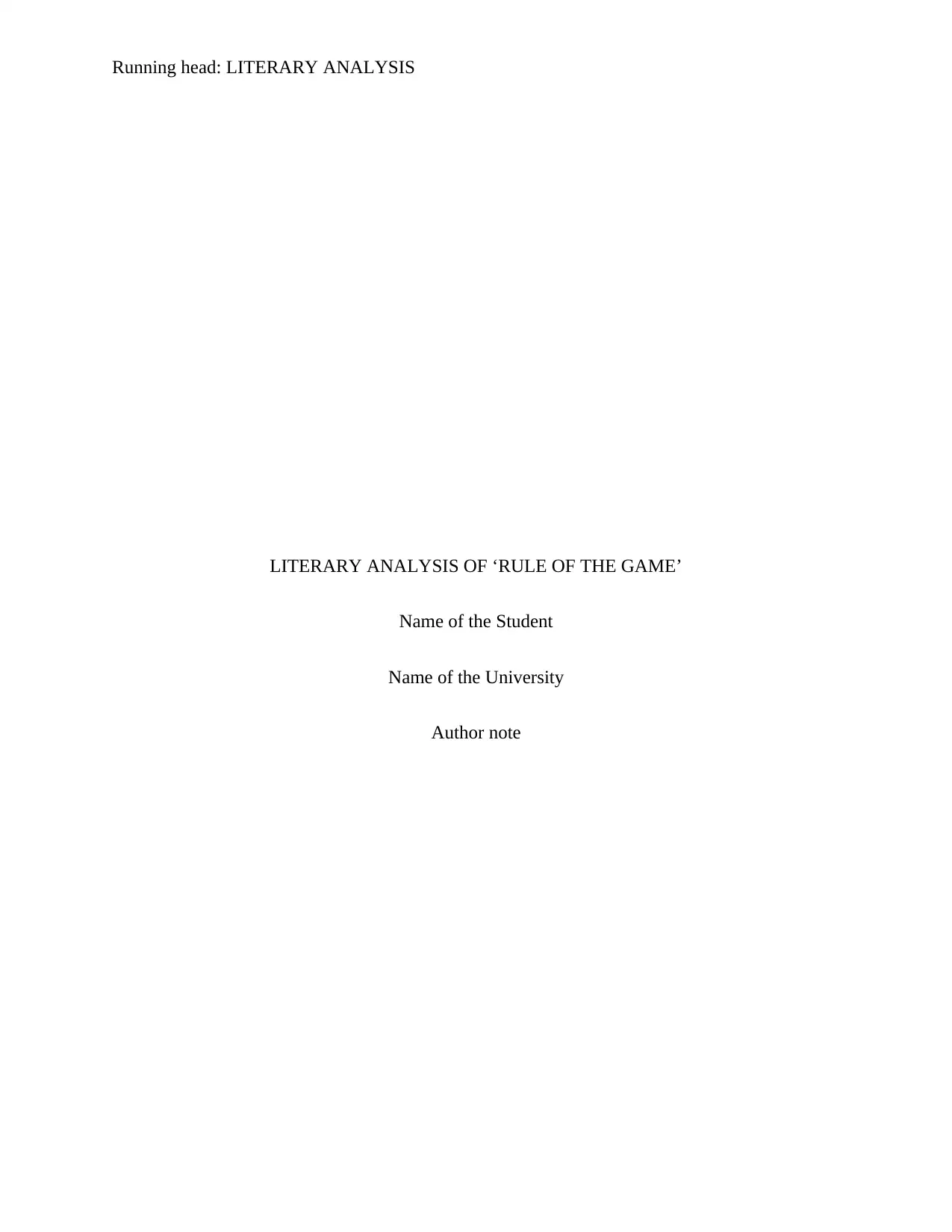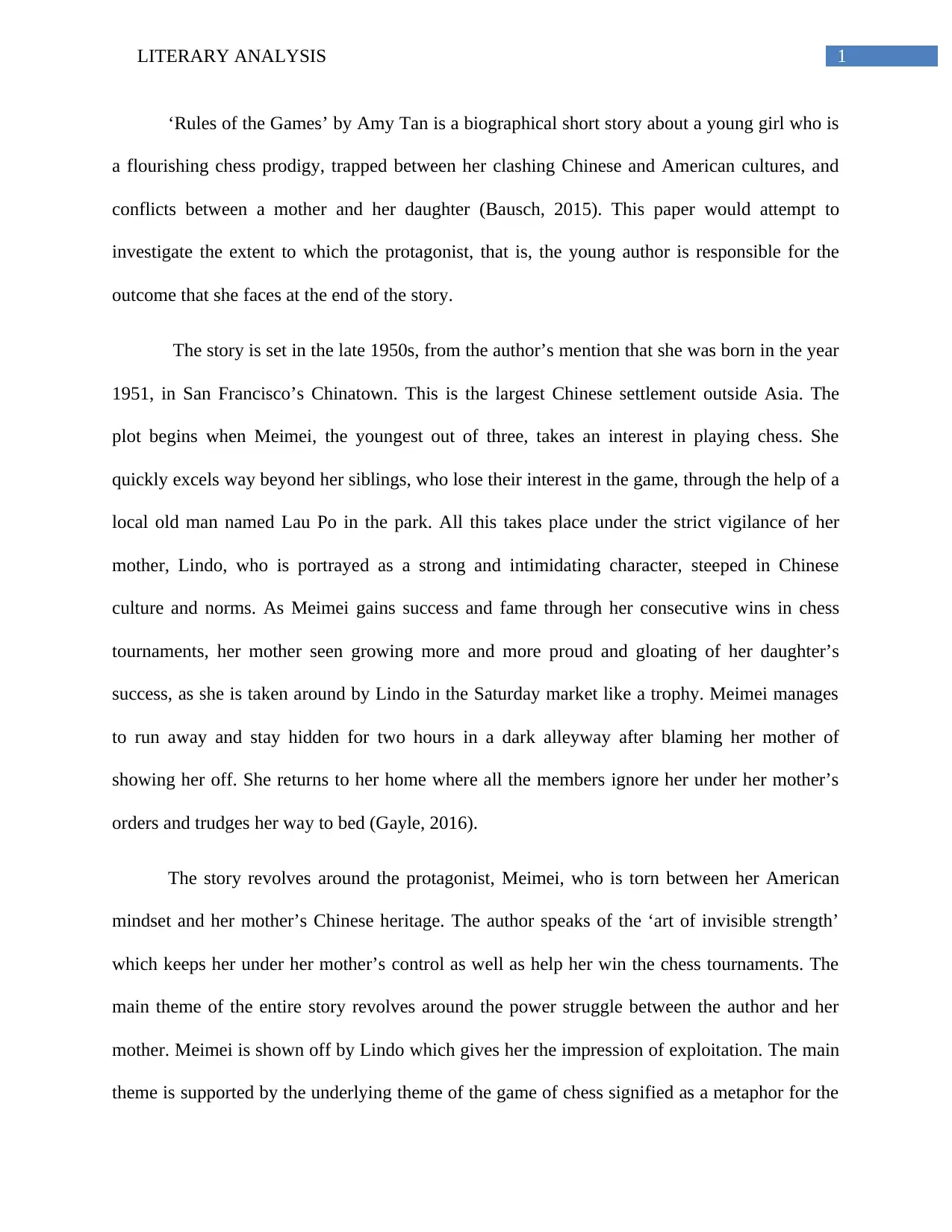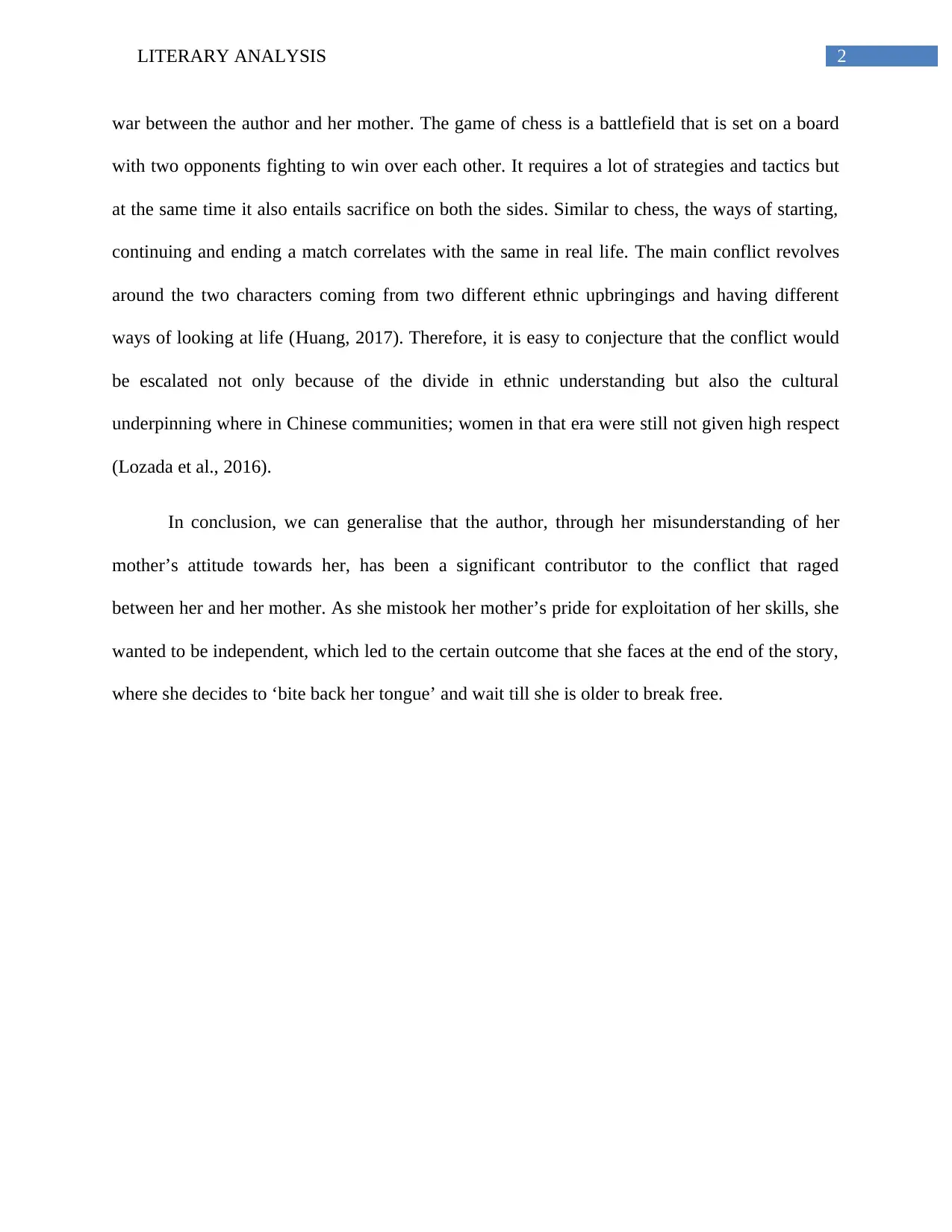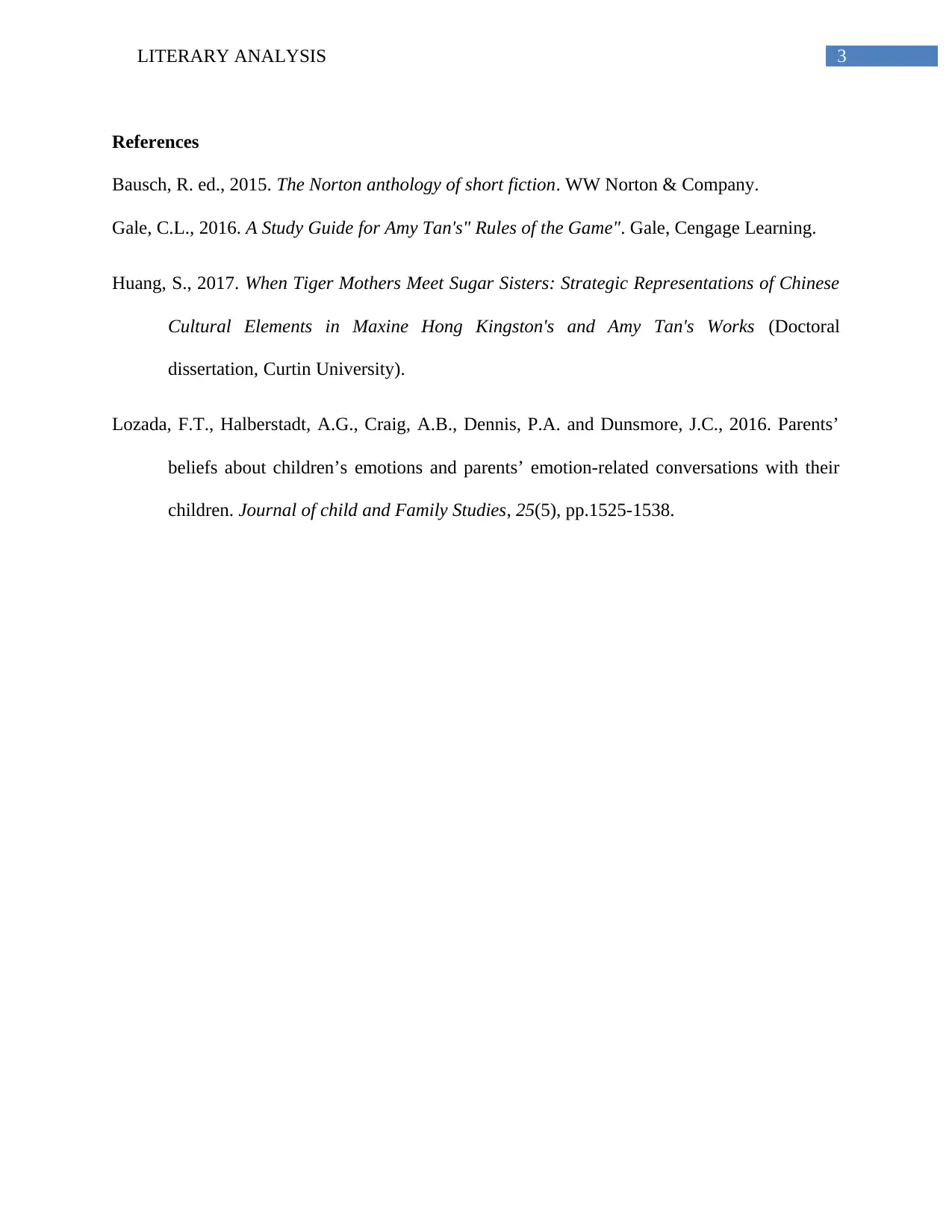ENG101: Literary Analysis of 'Rules of the Game' - Student Essay
VerifiedAdded on 2022/10/04
|4
|820
|19
Essay
AI Summary
This essay provides a literary analysis of Amy Tan's short story, 'Rules of the Game,' focusing on the protagonist, Meimei, and her role in the conflict with her mother, Lindo. Set in San Francisco's Chinatown, the story explores the clash between Chinese and American cultures, particularly through the lens of a young chess prodigy. The analysis examines how Meimei's misunderstanding of her mother's intentions and her desire for independence contribute to the central conflict, symbolized by the game of chess. The essay argues that Meimei's actions, stemming from her perception of exploitation, ultimately lead to the outcome where she internalizes her feelings, highlighting the power dynamics and cultural tensions within the narrative. The analysis references the theme of 'invisible strength' and its impact on the mother-daughter relationship, concluding that Meimei is significantly responsible for the escalating conflict due to her misinterpretation of her mother's actions.
1 out of 4










![[object Object]](/_next/static/media/star-bottom.7253800d.svg)